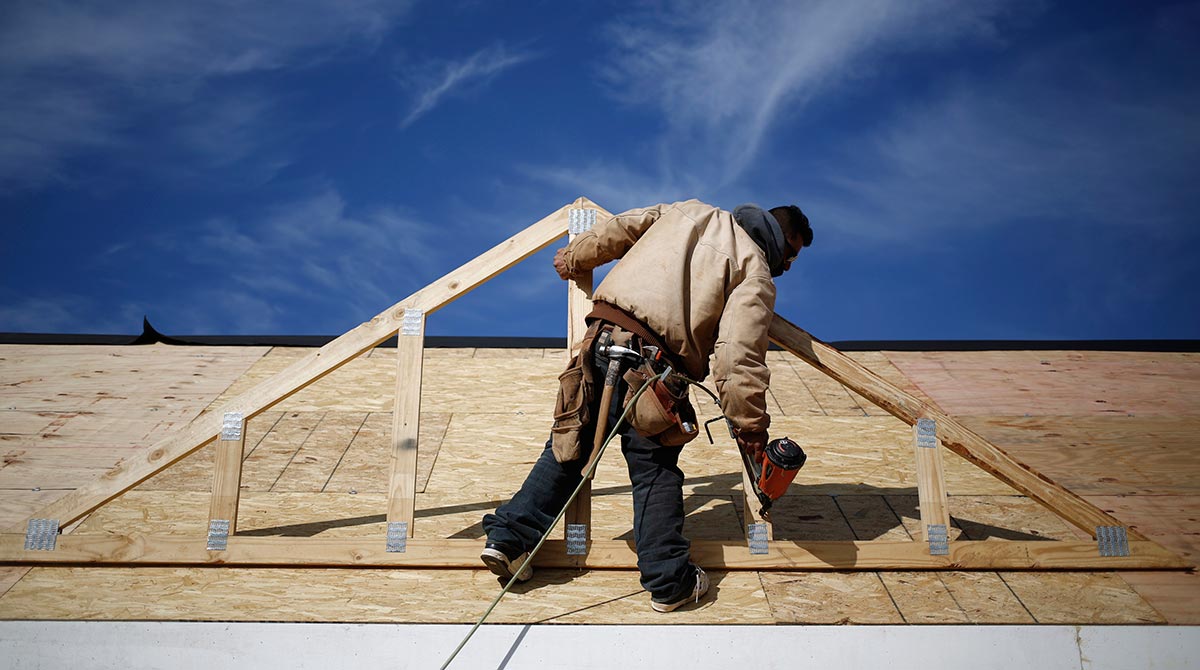Housing Starts Little Changed as Construction Plateaus

New-home construction in the United States was little changed in May, a sign the residential real-estate industry will add little to economic growth in the second quarter.
Housing starts in May fell 0.3% to a 1.16 million annualized rate from a 1.17 million pace the prior month, a Commerce Department report showed Friday in Washington. The median forecast of 77 economists surveyed by Bloomberg News was 1.15 million. Permits, a proxy for future construction, were also little changed from April.
Progress in residential real estate may be idling alongside other parts of the economy as builders wait to see if momentum re-accelerates before breaking ground on new projects. Borrowing costs that remain attractive may help lure prospective home-buyers into the market, though stronger wage growth will be needed to enable first-timers to take the plunge.
“All along we expected this would be a pretty gradual recovery, and that’s largely coming true,” said Scott Brown, chief economist at Raymond James Financial Inc. in St. Petersburg, Florida, whose forecast for housing starts was among the closest in the Bloomberg survey. “We’re still very far from a boom period in housing at all here, but I think the fundamentals are still pretty good.”
Estimates for housing starts in the Bloomberg survey ranged from 1.07 million to 1.2 million. The April figure was revised slightly down, leaving the rounded reading at 1.17 million.
Building permits climbed 0.7% in May to a 1.14 million annualized rate. Since applications trail last month’s starts, it indicates there is little scope for additional gains in construction in the next month or two. They were projected to rise to 1.15 million.
Construction of single-family houses increased 0.3% to an 764,000 rate, the most in three months, the report showed.
Work on multifamily homes such as apartment buildings fell 1.2% to a 400,000 rate. Data on these projects, which have led housing starts in recent years, can be volatile.
Two of four regions showed a decrease in starts in May, paced by a 33.3% drop in the Northeast, according to the report. Construction also fell in the Midwest but climbed in the West and South, where single-family starts rose to the highest level since December 2007.
On a year-to-year basis, total housing starts were up 9.5% in May on a seasonally adjusted basis.
Federal Reserve policymakers this week delayed another interest-rate hike, citing mixed economic growth and other uncertainties, such as the U.K.’s June 23 referendum on membership in the European Union.
The decline in the Fed’s expectations for the number of rate increases this year is keeping a lid on mortgage costs. The average interest rate on a 30-year, fixed mortgage declined to 3.54% in the week ended June 16, the lowest since May 2013.

